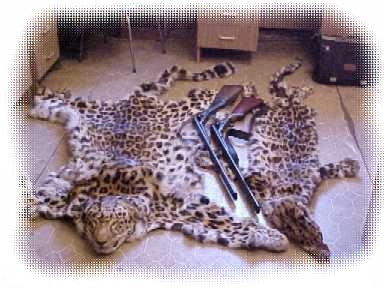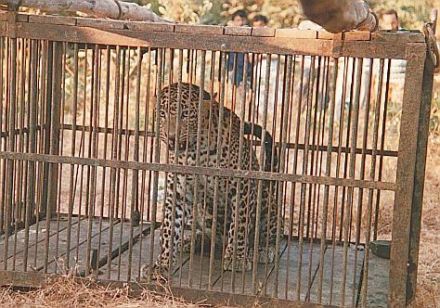
To the dismay of green activists and wild life conservationists, the dwindling number of leopards in India is a cause of grave concern. There number has gone down almost 80 per cent in past 50 years, thanks to the extensive human settlement infringing the interior forest parts and the increasing number of poachers and smugglers involved in illegal wildlife trade.
In India, leopard was mostly found in the Tarai regions adjacent to Indo-Nepal border and the interior forest parts neighboring the on limits of the Deccan plateau. The Indian leopard mentioned in many ethnic folklores and worshipped by many in tribal areas, once were abundant in Madhya Pradesh, Orissa, Maharshtra, West Bengal, Chattisgarh, Jharkhand and Karnataka along with the Tarai. But, now it is almost extinct in the adjacent Himalayan region and greatly endangered in the above-mentioned states.

The WWF chapter of India, last year in a seminar organized on wildlife habitat in Hyderabad, specified leopard along with Royal Bengal Tiger as the most prominent victim of poaching in India. In India, the leopards are poached for skin, hides, bones and claws. In the international market, a leopard skin fetches more than $500. The poached leopard parts are smuggled from India to China, where it is in great demand for medicinal purposes. Unless and until, poaching mafias exemplified by Sansar Chand, currently lodged in Jodhpur jail for his role in Ranthambor poaching, are severely punished, the big cats will remain in danger.
Another causative factor leading to extinction of Indian leopard is the decreasing limits of their forest habitat. In Mumbai, the economic capital of India, leopards often attack people living adjacent to Sanjay Gandhi National Park in search of prey. This can be taken as an example where man-animal conflict due to increasing human settlement on forestland. The burgeoning population and rapid industrialization in the need for land have no option but to decimate forests to establish new settlements. Man is building houses, factories, and settlements in the forests by destroying the woods, cutting trees mercilessly. This is direct encroachment on the habitats of the wild creatures and thereby welcoming danger in the form of ferocious animals straying into human settlements. This brings the villagers into direct conflict with wildlife animals like leopards and tigers. In last six months, there have been at least four to five incidents, where people killed leopards straying into human settlements.
The Indian Government is yet to evolve a comprehensive policy to resurrect the dwindling number of leopards as is done in case of tigers and lions. That day is not too far, when we can only see leopard in the pictures and animations and writers will never get chance to pen down classic epics based on these big cats like Maneaters of Malgudi or the Corbet folklores.
Image1
Image2
Via: Reuters

